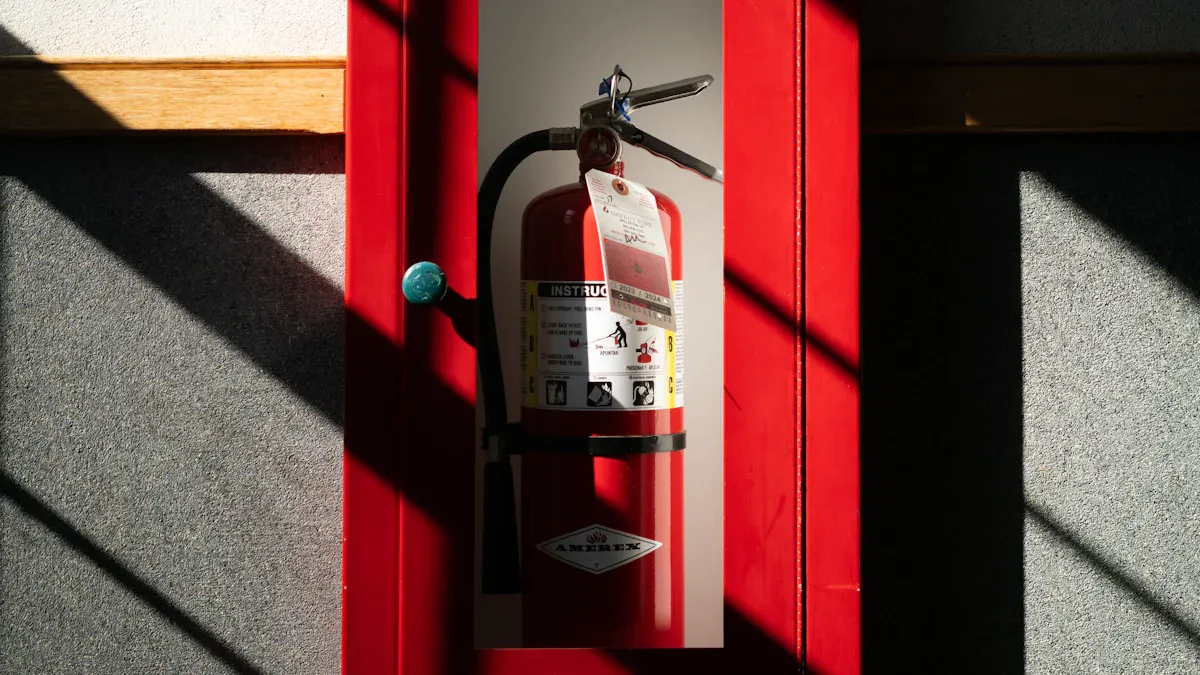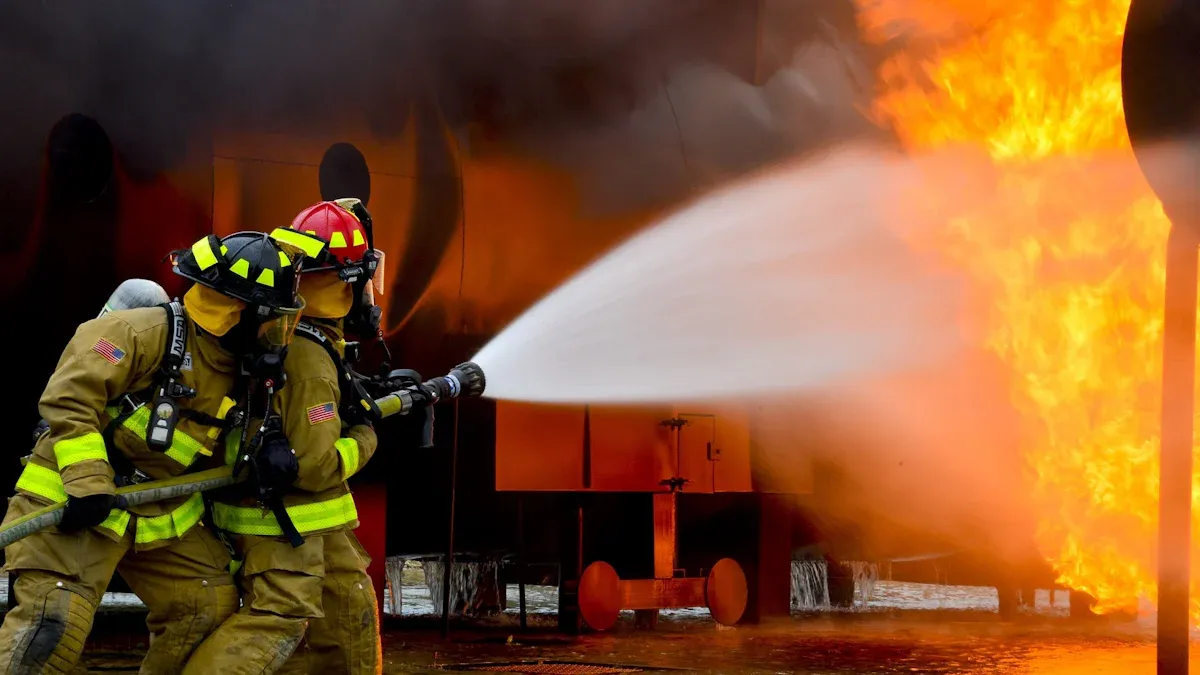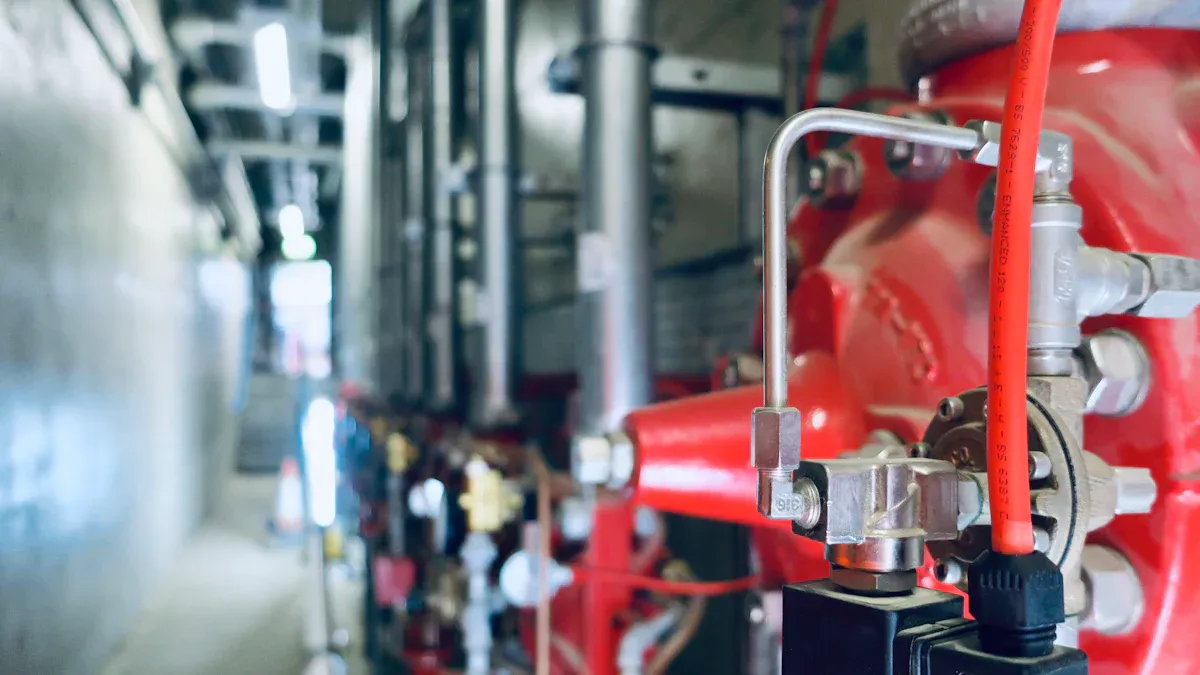
4-Way Breeching Inlets serve as critical access points for firefighters in high-rise buildings. These 4 way breeching inlets allow for rapid connection to the building’s water supply, ensuring immediate water access during emergencies. Their strategic placement enables firefighters to connect multiple hoses, including a fire hydrant connector, significantly enhancing water delivery efficiency. This capability is vital for effective fire suppression, particularly in structures where reaching upper floors poses a challenge, and is complemented by the use of a 4 way water divider to optimize water flow.
Purpose of 4-Way Breeching Inlets

4-Way Breeching Inlets play a vital role in enhancing fire safety in high-rise buildings. Their primary purpose is to facilitate efficient water delivery during firefighting operations. Here are some key advantages of installing these inlets:
- Multiple hose connections: They enable fast and efficient water delivery to upper floors, significantly reducing response times.
- Reliable link: These inlets provide an immediate connection between fire trucks and the building’s internal water network, overcoming challenges posed by low water pressure.
- Strategic placement: Firefighters can connect hoses without entering the structure, saving valuable time during emergencies.
- Robust design: The durable construction ensures safe operation under high pressure, complying with international standards.
- Quick water access: Rapid access to water helps suppress fires swiftly, minimizing damage and supporting safer evacuation for occupants and firefighters.
The effectiveness of 4-Way Breeching Inlets becomes even more apparent when compared to other types of breeching inlets. For instance, 2-way and 3-way breeching inlets offer limited outlets, which can hinder water delivery efficiency in larger buildings. The following table illustrates this comparison:
| Type of Breeching Inlet | Number of Outlets | Typical Use Case | Water Delivery Efficiency |
|---|---|---|---|
| 2-way | 2 | Smaller buildings | Lower efficiency due to limited outlets |
| 4-way | 4 | Larger buildings | Higher efficiency with multiple hydrant access |
Functionality of 4-Way Breeching Inlets

4-Way Breeching Inlets offer essential functionality that enhances firefighting operations in high-rise buildings. Their design allows for multiple hose connections, which significantly improves water supply efficiency during emergencies. Here are some key operational features that distinguish 4-Way Breeching Inlets from other fire department connections:
- Simultaneous Hose Connections: The 4-way design permits the connection of multiple hoses at once. This capability enables firefighters to attack a fire from different angles, increasing the effectiveness of their response.
- High Water Flow Capacity: These inlets are engineered to supply sufficient water flow even during large-scale fires. The larger outlet size of 6 inches, compared to the 4-inch outlet of 2-way inlets, supports this requirement.
- Strategic Accessibility: Typically installed outside buildings, 4-Way Breeching Inlets provide easy access for fire trucks. This placement allows firefighters to connect hoses quickly without navigating through the building’s interior.
- Durable Construction: Built to withstand high-pressure water flow, these inlets ensure reliable operation under demanding conditions. Their robust design meets international standards, making them a preferred choice for larger buildings.
The table below summarizes how the design of 4-Way Breeching Inlets facilitates simultaneous water supply from multiple fire engines:
| Evidence Description |
|---|
| The 4-way design allows for the connection of different water sources simultaneously. |
| Each outlet can be independently connected to various firefighting appliances. |
| It enables multiple teams to receive a continuous water supply from a single point. |
To maintain the functionality of 4-Way Breeching Inlets, regular maintenance practices are essential. Building owners and safety professionals should consider the following steps:
- Familiarize themselves with the inlet’s location and design.
- Check the firefighting equipment for readiness and inspect hoses for damage.
- Verify the operational status of the water supply connected to the inlet.
- After use, close the main valve to stop water flow.
- Carefully disconnect the hose and store it properly.
- Report any issues with the inlet or equipment to the maintenance team.
By understanding the functionality of 4-Way Breeching Inlets, building owners and safety professionals can enhance their fire safety strategies. These inlets not only improve water delivery efficiency but also support effective firefighting operations in high-rise buildings.
Installation Considerations for 4-Way Breeching Inlets
When installing 4-Way Breeching Inlets, several key considerations ensure optimal performance and compliance with safety standards. First, these inlets are best suited for permanent installations. This characteristic limits their use in temporary or outdoor fire situations.
Tip: Ensure that the inlet connects directly to the building’s internal fire protection system. This connection is crucial for effective operation during emergencies.
Firefighters must also verify that the building’s water network remains functional and accessible. A non-operational water supply can hinder firefighting efforts. Additionally, the fixed location of the inlet requires careful planning of hose routes. This planning ensures that firefighters can reach all fire zones efficiently.
Regular maintenance is essential for safe and effective operation. Building owners should establish a routine inspection schedule to check the condition of the inlets and associated equipment. Proper training for personnel on how to operate these inlets is equally important.
The materials used in constructing 4-Way Breeching Inlets significantly impact their durability and compliance with fire safety standards. The following table outlines recommended materials and their properties:
| Material | Properties | Applications |
|---|---|---|
| Ductile Iron | Flexible, resistant to cracking, strong, durable, withstands high pressures | Firefighting applications, coated for corrosion resistance |
| Stainless Steel | Corrosion-resistant, strong, handles high pressures | Coastal areas, industrial settings |
| Aluminum | Lightweight, corrosion-resistant (less than stainless steel) | Mobile firefighting units |
| Composite Materials | Strong, lightweight, designed to resist corrosion | Various applications with unique requirements |
| Valves (Brass, Stainless Steel, Plastic) | Strong, corrosion-resistant, durable, cost-effective | Control flow in firefighting systems |
| Gaskets and Seals (Rubber, Neoprene, EPDM) | Flexible, conform to surfaces, prevent leaks | Ensure tight connections in breeching inlets |
By considering these factors, building owners and safety professionals can enhance the effectiveness of 4-Way Breeching Inlets in high-rise fire safety.
Manufacturer Commitment to Quality
Manufacturers of 4-Way Breeching Inlets prioritize quality to ensure reliable performance during emergencies. They implement rigorous quality assurance processes throughout production. These processes include:
| Quality Assurance Aspect | Description |
|---|---|
| Quality Management | Companies employ exquisite quality management practices to ensure product reliability. |
| Manufacturing Technology | Sophisticated manufacturing technology enhances product performance. |
| Inspection Rules | Precise inspection rules maintain high standards during production. |
| After-Sales Service | Meticulous after-sales service ensures customer satisfaction and support. |
Environmental considerations also play a crucial role in the manufacturing and installation of these inlets. Manufacturers select materials that can endure harsh environmental factors, including high temperatures and corrosive substances. This selection is vital for ensuring the inlet’s effectiveness and longevity in industrial environments.
By adhering to these quality standards, manufacturers contribute to the overall safety and reliability of firefighting operations in high-rise buildings. Their commitment to excellence not only enhances the performance of 4-Way Breeching Inlets but also supports the safety of occupants and firefighters alike.
4-Way Breeching Inlets significantly enhance firefighting capabilities in high-rise buildings. They provide flexibility and accessibility, allowing firefighters to connect hoses from multiple directions. This feature ensures increased water supply options, which guarantees continuous flow even if one source fails. Their efficiency in firefighting operations and scalability for larger buildings make them indispensable. Building owners and safety professionals must prioritize the installation and maintenance of these inlets to ensure optimal fire safety.
FAQ
What is the primary function of 4-Way Breeching Inlets?
4-Way Breeching Inlets facilitate quick water access for firefighters, allowing multiple hose connections during emergencies.
How do 4-Way Breeching Inlets improve firefighting efficiency?
These inlets enable simultaneous connections from various water sources, ensuring a continuous water supply even if one source fails.
Why is regular maintenance important for 4-Way Breeching Inlets?
Regular maintenance ensures optimal performance, prevents malfunctions, and guarantees reliable water supply during critical firefighting operations.
Post time: Sep-26-2025

